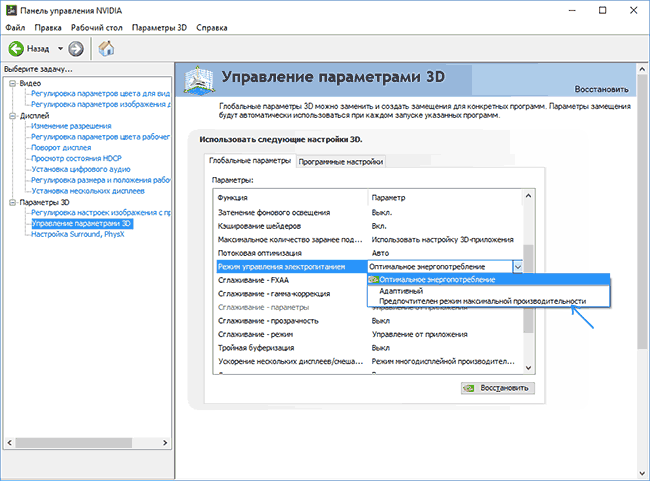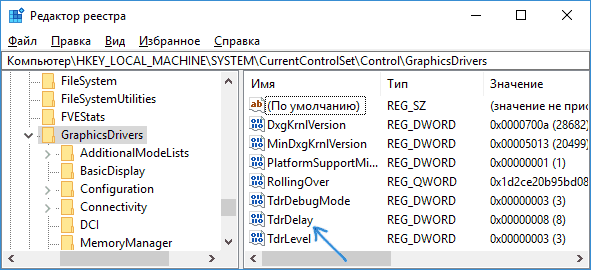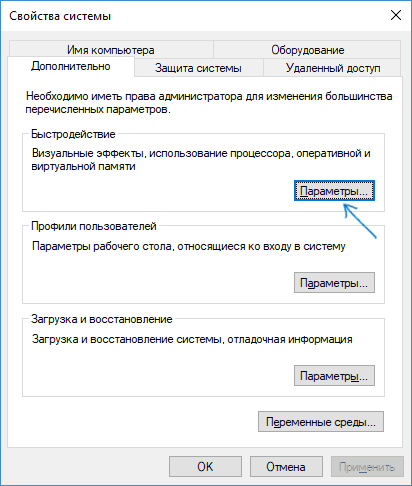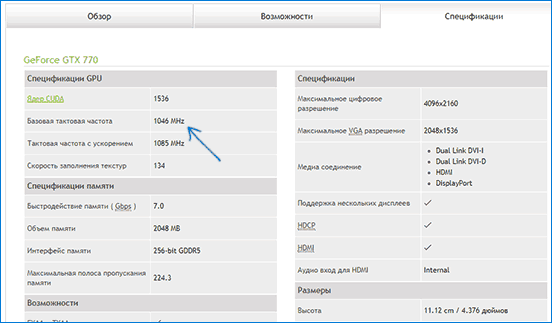The video driver stopped responding and was successfully restored - how to fix it
A common error in Windows 7 and less commonly in Windows 10 and 8 is the message “The video driver has stopped responding and was successfully repaired” followed by text about which driver caused the problem (usually NVIDIA or AMD followed by the text Kernel Moe Driver, options are also possible nvlddmkm and atikmdag, meaning the same drivers for GeForce and Radeon video cards, respectively).
This instruction contains several ways to fix the problem and make sure that messages that the video driver has stopped responding do not appear in the future.
What to do first when the “Video driver has stopped responding” error appears
First of all, about several simple, but more often than not other effective ways to fix the “Video driver has stopped responding” problem for novice users who, due to ignorance, may not have tried them yet.
Updating or rolling back video card drivers
Most often, the problem is caused by incorrect operation of the video card driver or the wrong driver, and the following nuances must be taken into account.
- If the Windows 10, 8 or Windows 7 device manager reports that the driver does not need to be updated, but you did not install the driver manually, then the driver most likely needs to be updated, just do not try to use the device manager for this, but download the installer from the NVIDIA or AMD website.
- If you installed drivers using a driver pack (a third-party program for automatically installing drivers), then you should try installing the driver from the official NVIDIA or AMD website.
- If the downloaded drivers are not installed, then you should try to remove the existing ones using Display Driver Uninstaller (see, for example), and if you have a laptop, then try installing the driver not from the AMD or NVIDIA website, but from the laptop manufacturer’s website specifically for your models.
If you are sure that the latest drivers are installed and the problem appeared recently, then you can try to roll back the video card driver, to do this:

After rolling back the driver, check if the problem continues to occur.
Fixing a bug on some NVIDIA graphics cards by changing power management settings
In some cases, the problem is caused by the default settings of NVIDIA video cards, which lead to the fact that for Windows the video card sometimes freezes, which leads to the error “The video driver has stopped responding and was successfully restored.” Changing the settings from "Optimal Power" or "Adaptive" may help. The procedure will be as follows:

After this, you can check whether this helped to correct the situation with the error that appears.
Another setting that can affect the appearance or absence of an error in the NVIDIA Control Panel and affects several parameters at once is “Adjust image settings with preview” in the “3D Settings” section.
Try enabling "Custom settings with a focus on performance" and see if that makes a difference.
Fix by changing the Timeout Detection and Recovery parameter in the Windows Registry
This method is offered on the official Microsoft website, although it is not entirely effective (i.e. it may remove the message about the problem, but the problem itself may persist). The essence of the method is to change the value of the TdrDelay parameter, which is responsible for waiting for a response from the video driver.

After you finish working with the Registry Editor, close it and restart your computer or laptop.
Hardware acceleration in browser and Windows
If the error occurs when working in browsers or on the desktop of Windows 10, 8 or Windows 7 (i.e. not in heavy graphics applications), try the following methods.
For problems on the Windows desktop:

In case the problem appears in browsers when playing video or Flash content, try it (or enable it if it was disabled).
Important: The following methods are not exactly for beginners and, in theory, can cause additional problems. Use them only at your own risk.
Overclocking a video card as the cause of the problem
If you have overclocked a video card yourself, then most likely you know that the problem in question may be caused by overclocking. If you haven’t done this, then there is a chance that your video card is factory overclocked; as a rule, the name contains the letters OC (Overclocked), but even without them, the clock frequencies of video cards are often higher than the base ones provided by the chip manufacturer.
If this is your case, then try setting the base (standard for this graphics chip) GPU and memory frequencies; you can use the following utilities for this.
For NVIDIA video cards - free NVIDIA Inspector program:

If it doesn't work and the problems are not fixed, you can try using GPU (Base Clock) frequencies lower than the base ones. You can download NVIDIA Inspector from the developer’s website http://www.guru3d.com/files-details/nvidia-inspector-download.html
For AMD graphics cards, you can use AMD Overdrive in Catalyst Control Center. The task will be the same - set the base GPU frequencies for the video card. An alternative solution is MSI Afterburner.
Additional Information
In theory, the cause of the problem could be any program running on the computer that actively uses the video card. Moreover, it may turn out that you do not know about the presence of such programs on your computer (for example, if it is mining malware).
Also, one of the possible, although not often encountered, options is hardware problems with the video card, and sometimes (especially for integrated video) with the computer’s RAM (in this case, “blue screens of death” may also appear from time to time).
